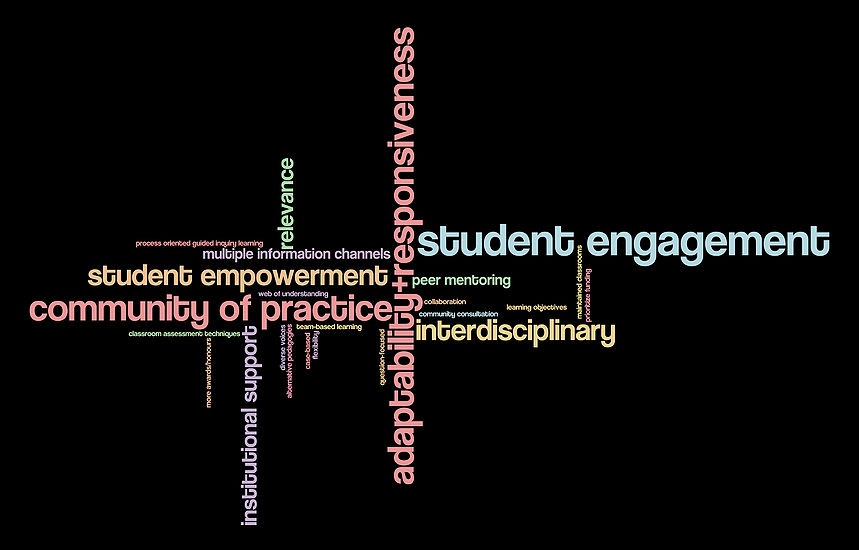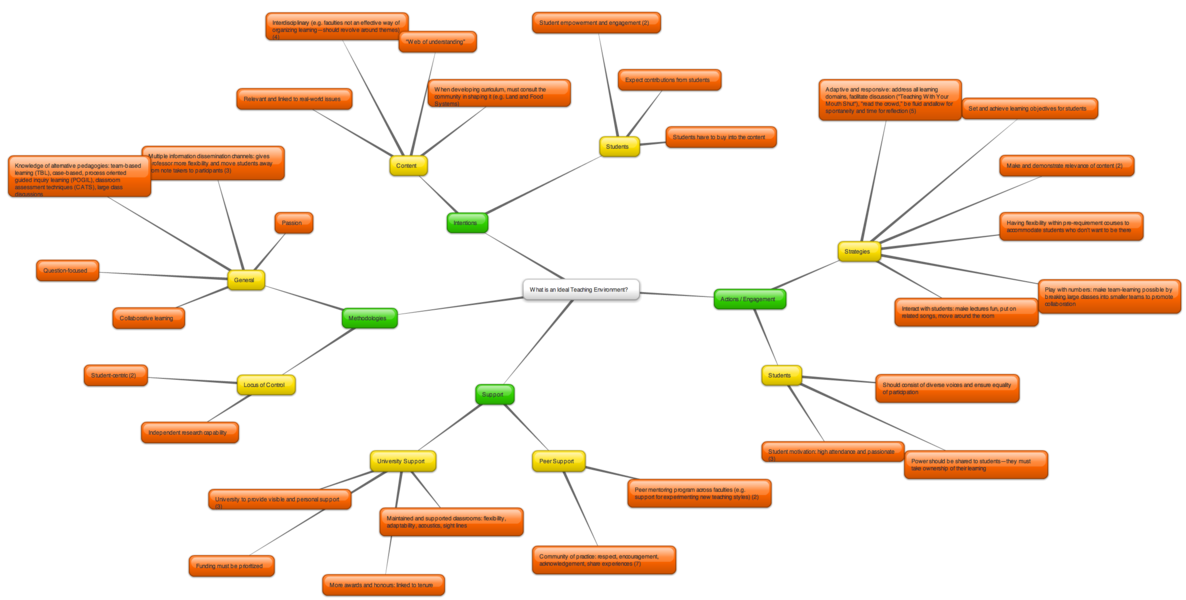Documentation:World Cafe/UBC's Teaching Environment
Context for Conversation
<flashow>http://static.slidesharecdn.com/swf/ssplayer2.swf?doc=worldcaferevteacher-101020180956-phpapp01&stripped_title=world-cafe-ubc-teach%7Cwidth=500%7Cheight=300</flashow>
Questions
- Describe a really good teaching experience you've had recently. What made it good? Why?
- What are the necessary ingredients to support great teaching experiences?
Results
Themes were generated by 7 participants during brainstorming and refined during grouping and the generation of themes related to the ideas discussed. We further refined and summarized in 3 ways:
Wordle
Wordles (word clouds) are graphical representations of words, with greater prominence to words that appear more frequently.

Mind Map
Mind maps arrange words and ideas intuitively to better understand the information and its interrelationships. This is the same content as in the text table below.Expandable map view.
Text Table
Note: Numbers in parentheses indicate a similar/same idea that was repeated more than once.
| Themes | Focus: Ideas & Examples |
|---|---|
| Support |
University Support
Peer Support
|
| Methodologies |
General
Locus of Control
|
| Intentions |
Content
Students
|
| Actions / Engagement |
Strategies
Students
|
Role of Technology
The prevalent idea that emerged during the Teacher sessions was that technology (supporting the learning environment) should be: easy to use, consistently available and properly maintained and supported. The focus was mainly on technology used in the classroom. Examples included:
- Up-to-date projectors.
- Working microphones/audio systems.
- Robust (and flexible?) course management system.
- Use of clickers and scantrons during assessments so focus can be on discussion, problems, cases, team based learning).
- Other ways of disseminating lecture content so students are not scribes, but can actively participate.
- Visible support for technology (CTLT, ITS, Classroom Services, Facilities).
Summary
The following seem to have emerged as the sticking points in the conversation so far. An ideal learning environment involves:
- Small-scale: based on relationships.
- Real dialogue and content contribution between and among learners and faculty (non-hierarchical).
- Many ways to engage with content.
- Engagement in real-world issues, projects and questions.
An ideal teaching environment:
- Functions as a community of practice (respect, encouragement, acknowledgment, sharing).
- Supports flexible and responsive teaching.
- Motivates and engages students.
- Is effectively supported by the institution (physical space, technical support, personal support).
Questions for Further Reflection
- Is change [of the learning/teaching environment] itself sufficient?
- Because UBC is primarily a research-intensive university, does this sideline providing quality teaching?
- When a new framework or syllabus is in place, how can you tell if it is successful or not?
- What does successful learning look like?
Contribute
Do you have some ideas about what makes an ideal teaching/learning environment? Please share with us! Login to your UBC Wiki account using your CWL and add in your thoughts on the Discussion page (look for the tab at the top of this page).
